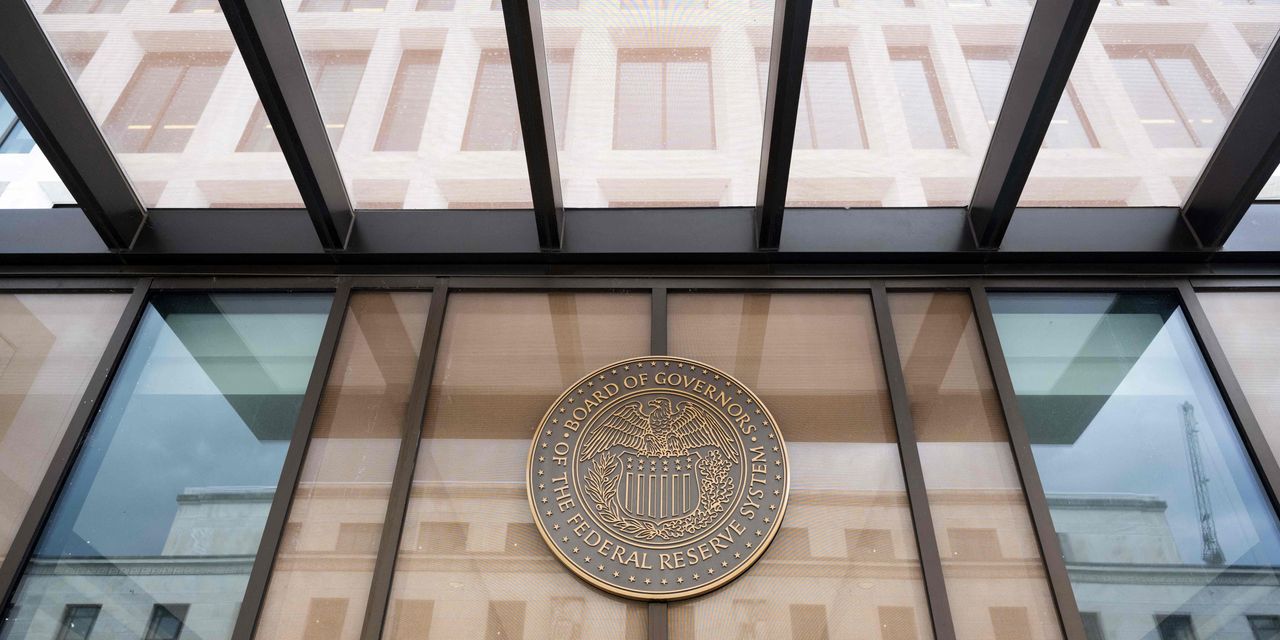The unfolding conflict between Israel and Hamas has financial markets weighing how a war in the Middle East may impact the Federal Reserve’s next policy steps.
For now, fed funds futures traders see a higher chance of no further action by the Federal Reserve this year. They boosted the likelihood of a pause in November to 88.5% from 72.9% a day ago, and of no action by December to 74% from 57.6%, according to the CME FedWatch Tool. That would leave the Fed’s main interest-rate target at a 22-year high of between 5.25%-5.5%.
Read this next: Here’s what Israel-Hamas war means for oil prices as fighting continues
There’s a pretty big caveat, however. Traders, investors and even the Fed have all been wrong before, particularly when they underestimated the strength and durability of price pressures in the run-up to the current inflation era. So it’s equally possible that the Israel-Hamas war leads to a resurgence of inflation via higher oil prices. Macro strategist Henry Allen and research analyst Cassidy Ainsworth-Grace of Frankfurt-based Deutsche Bank
DB,
are warning of the risk that 1970’s-style stagflation — or an unwelcome mix of inflation and slower growth — may repeat itself.
“It’s too early to say whether the knee-jerk reactions seen in the market on Monday are going to be maintained or accelerate. It depends on how quickly and how far this conflict expands,” said Randal Stephenson, head of investment banking at FE International, a mergers-and-acquisitions advisory firm headquartered in New York.
In addition to rising market-implied chances of no action by the Fed this year, greater demand was seen for 10- and 30-year Treasury futures, boosting the possibility that those corresponding yields could slip when the cash market reopens on Tuesday. The Treasury market was closed on Monday for Columbus Day and Indigenous Peoples Day.
Gold rallied on its safe-haven appeal and oil prices settled more than 4% higher on Monday. U.S. stocks
DJIA
SPX
COMP
finished with gains in volatile trading as investors focused on remarks from Dallas Fed President Lorie Logan that suggested there may be less need to raise the fed funds rate. Separately, Fed Vice Chair Philip Jefferson said he remains cognizant of the impact higher Treasury yields are having, and will take into account financial-market developments when assessing the future path of policy.
“The Fed has had a period over the last year where it probably thought it was achieving what it needed to in order to reduce inflation and have a softer landing,” said Stephenson of FE International. But an unexpected shock like the one over the weekend from the Middle East “risks undermining the efforts of central banks to bring inflation under control.”
“If this conflict remains contained between Israel and Hamas, that probably won’t have larger ramifications on financial markets in the longer term,” Stephenson said via phone on Monday. However, “if this conflict spreads to other regions, that could cause a rise in oil prices and that would be inflationary and would affect what the Fed is trying to do.”
The Fed’s most recent projections, released on Sept. 20, implied there would be one more rate hike by year-end and reflected policy makers’ expectations for inflation to head toward 2% through 2026 and over the longer term.
Brent Schutte, chief investment officer of the Northwestern Mutual Wealth Management Co. in Milwaukee, said his team is watching the news out of Israel and that “these tragic events have a very real human impact that we would be remiss not to mention.”
“The situation is also already having an impact on markets and could act as a growing headwind, particularly if it spreads,” Schutte said in an email. “We will be watching the situation and its potential impact on markets closely.”
Read the full article here













Leave a Reply